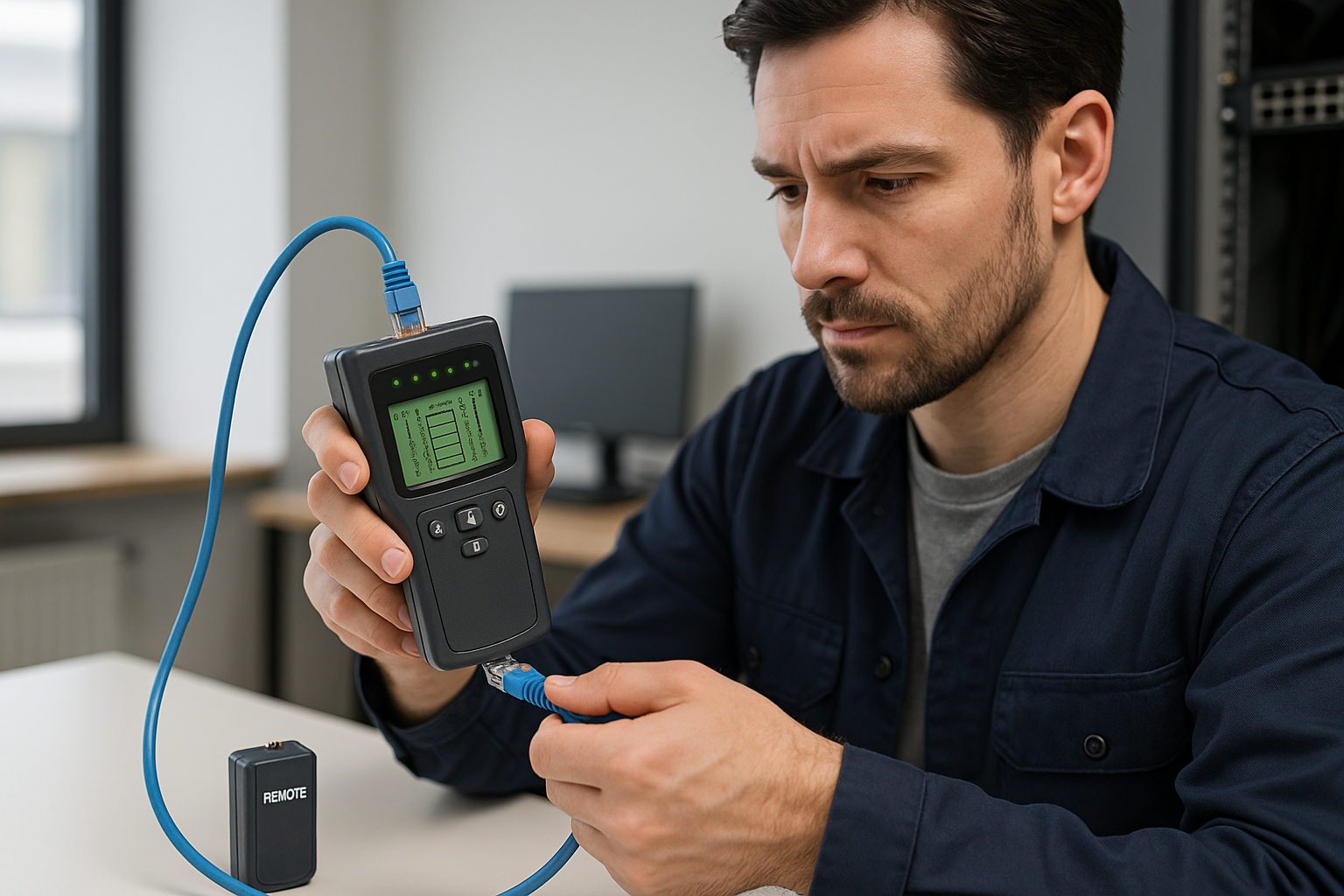How do you pull cables with a tension spring in a smart and safe way?
- , by Jarno Heideman
- 5 min reading time

How to pull cables with a tension spring in a smart and safe way
Laying cables through pipes can be tricky, especially if there are bends or long stretches. A tension spring makes the job a lot easier. It allows you to pull cables smoothly through pipes, without having to break open walls or damage existing installations. In this article you can read exactly how to do this and what you should pay attention to.
What exactly is a tension spring?
A tension spring is a flexible tool that you use to pull cables through an empty tube or conduit. There are two main types: plastic and steel. Plastic tension springs are flexible, useful for short distances or pipes with soft bends. Steel tension springs are stiffer and therefore better suited for longer distances or if there is a lot of resistance in the pipe. Which one you choose depends on the situation in which you are working.
When using a tension spring
A tension spring is used when you want to pull cables through an existing conduit. Think of installations in walls, floors or ceilings where you do not have access to the entire conduit. A tension spring is especially indispensable for renovations or extensions of existing networks. It is also often used in new construction when the conduits are already incorporated in the walls.
This is all you need
Before you get started, it's handy to have everything at hand. What you need:
-
A tension spring made of steel or plastic
-
Tape or a pull sleeve to attach cables to the spring
-
Green soap or talcum powder as a lubricant
-
Gloves to protect your hands
-
Possibly a second person for longer journeys
With these tools you can work faster and prevent damage to your materials or installation.
In these steps you pull cables
Step 1: Push the tension spring into the tube
Make sure you insert the tension spring gently and without forcing. Do not use abrupt movements. Pipes can contain small bends or obstacles, so feel what you are doing. Do you feel resistance? Then move slightly back and forth, but keep pushing gently until the spring appears on the other side.
Step 2: Securely attach cables to the spring
Once you have the spring all the way through, you can then attach the cables firmly to the end. Use a pull sleeve or tape to secure them. Make sure that the whole thing stays slim and streamlined, so that it can smoothly go back through the tube.
Step 3: Use lubricant for less resistance
Lightly grease the cables with green soap or talcum powder. This will make them slide better through the pipe and reduce the chance of them getting caught. This is especially useful for longer pipes or when pulling multiple cables at once.
Step 4: Gently retract the tension spring
Pull the spring back slowly, without jerking. Have someone else guide the cables from the starting point. This will prevent kinks or damage to the insulation. Keep communicating with each other so that you notice if it gets caught somewhere.
Step 5: Check and finish cables
When the cables are fully pulled through, check that they are intact. Check that the sheathing is not chafed anywhere and that the cable is properly positioned in the tube. This way you know for sure that everything can be connected safely.
Always work with attention. Try to avoid haste, because that will lead to mistakes or damage more quickly.
What to do when it gets stuck
Sometimes it doesn't work the first time. Don't worry, there are handy solutions:
-
Pull the spring back a little and try again
-
Move slightly back and forth to pass an obstacle
-
Add extra lubricant
-
Try inserting the tension spring from the other side of the tube
-
Ask someone to help, especially for longer stretches
Are you really stuck? Then it is smart to stop for a moment and re-examine the situation. Forcing rarely produces the desired result.
How to work safely with cables
When laying cables, safety always comes first. Switch off the power before working on existing installations. Use tools that are suitable for electrical applications. Wear sturdy gloves, especially when working with steel tension springs. Make sure your workplace is well lit and that you do not trip over cables.
Common Mistakes and How to Avoid Them
Anyone who starts unprepared will quickly run into problems. Common mistakes are:
-
Loosely attach cables to the tension spring, leaving them in the tube
-
Pulling too fast risks damaging cables
-
Do not use lubricant for long distances
-
Not checking that the cable is correctly positioned after pulling
Good preparation prevents hassle. So take some time before you start.
Related categories
Check out our other blogs
-

, by Jarno Heideman How do you easily set up a home network yourself?
-

, by Jarno Heideman What are the color codes of UTP cables and how do you use them correctly?
-

, by Jarno Heideman How do you test a UTP cable without making mistakes?
-

, by Jarno Heideman How do you connect fiber optic yourself without any hassle at home?



